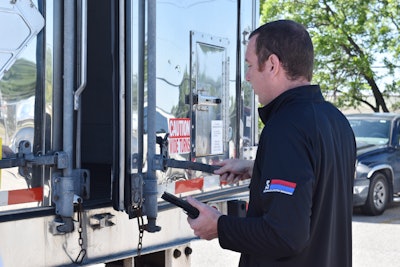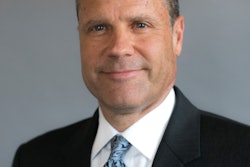
Editors Note: The following article is brought to you by PLM Trailer Leasing in partnership with the Supply Chain Network.
A critical aspect of food safety involves keeping the trucks and refrigerated trailers used to haul food well maintained and performing at optimal levels. An ongoing preventive maintenance program for this equipment ensures meats, seafood, fresh produce and frozen foods reach their destinations on time and in conditions that are safe for human consumption. Not only that, but a quality maintenance program shields fleet operations from unanticipated equipment failures that can lead to costly load losses and complaining customers.
The Food and Drug Administration (FDA) added another level to the importance of well-maintained refrigerated trailers when it passed the Food Safety Modernization Act (FSMA) in 2011. At the same time, 2017 is being hailed as the year many of the mandates, including the safe transport of food, are met.
As a result, grocers, processors and food manufacturers seek to resolve several key issues: One, producing high quality, safe foods for consumers to eat; two, moving these products to customers on time and in safe condition; and three, meeting all the requirements of the new regulation.
PLM is a lease provider, operating a fleet of more than 9,000 refrigerated units from locations across the U.S. Most of the companies leasing from PLM also participate in its on-site maintenance program, where PLM manages the vendors and technicians needed to keep refrigerated trailers in top working order. In this role, PLM captures the hard and soft costs incurred in maintaining this equipment.
“Because we are a leasing company as well as a maintenance service provider, we have systems in place to capture data and organize it into usable formats, to make decisions around it,” says Jodi Wishart, manager of financial policy at PLM.
The data helps the nearly 50-year-old company present customers with a compelling case for outsourcing maintenance. The reality is that a well-managed, preventive on-site maintenance program, as well as having top technicians performing regular field inspections, can save at least 10 to 20 percent in fleet costs annually, not just in preventive maintenance, but in cost avoidance too.
Wishart explains that, “The most costly thing that can happen to a refrigerated fleet is when a loaded trailer for a strategic and important customer goes down in mid-transit in an area where help is not readily available, and you have load loss. I’m not sure how you put a dollar value on that, but a preventive maintenance program, when followed correctly, will help you avoid that most expensive cost to your fleet.”
The Proof is in the Pudding
Wishart works in PLM’s Personalized Customer Solutions team. In this role, she performs analytic modeling for potential customers to shed light on their current maintenance practices and showcase how outsourcing their maintenance might actually save money. In most cases, she unveils a strong case for outsourcing.
Wishart consults with potential customers to demonstrate how a well-managed preventive maintenance program might work for them. This consultative approach helps potential customers make better maintenance decisions and determine whether contracting for emergency breakdown service or on-site maintenance is a good fit.
The first thing PLM does when it engages in talks with a potential customer is share the knowledge they have collected over the years. In the refrigerated trucking industry, the hard costs, which might include lease or loan payments, maintenance and fuel, are readily known. But digging into soft costs, which may include the expense associated with a breakdown or unplanned maintenance, a lost load, a reduced lifespan on a trailer/TRU (transport refrigeration unit) due to missed maintenance, and FSMA compliance issues, is complicated.
PLM aids companies with this daunting task by conducting a fleet walk, where members of its Personalized Customer Solutions team evaluate a company’s existing assets and their ages, then discusses the applications they perform, the miles they put in and the hours they run to make sure they have the right assets in the right application at the right locations, reports Idali Colon, director of business services at PLM.
The activity paints a true maintenance picture for customers to build upon. “For refrigerated trailer bodies, we think of cost as a cost per mile; the maintenance that happens on a trailer, tires, brakes, and wear and tear on the trailer body are figured into this,” Wishart says.
The same calculations are done for refrigeration units. Preventive maintenance costs and larger expenses, such as installing a new compressor, are added up over time and divided by the hours the equipment ran to figure out the cost per hour.
“Refrigerated trailers have various life spans, so gathering all those costs and trying to make sense of them over five, seven or 10 years, can be a tremendous project,” says Wishart.
The exercise helps PLM get a handle on the amount potential customers are currently spending on maintenance as well as their costs per hour and costs per mile. The Personalized Customer Solutions team then engages the potential customer about where PLM’s maintenance program could take them.
Managed Replacement
While engineering and design improvements have boosted the sophistication of refrigerated trailers and made them more fuel efficient, durable and reliable, a disciplined maintenance strategy is still in order, and it’s one that PLM is well positioned to provide through a solid preventive maintenance program and managed trailer replacement.
“Maintenance costs increase as a trailer ages, although tire costs tend to remain stable over time,” Wishart explains.
The problem is the costs of an aging trailer are not always tangible. Consider the diesel engine providing the power; the more hours it accumulates, the more expensive it gets to operate, and the higher the risk for an unexpected and costly major breakdown.
This risk isn’t one most companies can readily absorb. Fleet operations can better control maintenance costs through a managed replacement plan, and PLM’s professionals can show them how by calculating when their costs per mile and costs per hour will begin increasing at a rate that makes the whole fleet more expensive. When this occurs, it’s time to begin bringing on new trailers to replace old ones.
“If something starts getting more and more expensive as you go along, you’re better off starting fresh with a new piece of equipment,” Wishart explains.
When comparing costs, however, it’s essential that companies compare apples to apples. For example, each trailer operates at a different cost point depending on hours, miles and age. Accurate comparisons involve segmenting a fleet by natural groupings (usually by annual hours of operation) to compare operating costs. Accurate fleet management decisions become possible when trailers are compared by 2,000-, 4,000-, 6,000- and 8,000-hour groupings.
“The greater value is the data can also determine the fleet’s total cost of operation,” Wishart says. “We can then make a total fleet plan recommendation to help drive out costs.”
Maintenance in Motion
PLM partners with customers to manage every aspect of their maintenance program, from scheduling private maintenance to coordinating repairs, locally or over the road. PLM operates 27 branch locations across the United States, employs service technicians and operates fully equipped mobile repair vehicles to perform on-site maintenance. The company also partners with a nationwide vendor network to provide routine and emergency breakdown service, 24 hours a day, seven days a week, across the continental United States.
“We cover the TRU (transport refrigeration unit) and the entire body of the trailer, the tires to the lift gate, everything. It’s really full-service maintenance,” says PLM’s Colon.
PLM carries an extensive inventory of OEM parts and its technicians are ready to perform all work on these units from checking the refrigeration unit for adequate cooling, unobstructed airflow, tightening electrical connections, performing oil changes, changing tires, replacing worn brake pads and more. Once on-site, technicians go the extra mile and do an overall fleet check, looking for lights that are out, damages, low air in tires, and more—anything that could contribute to downtime further down the road.
Going on-site to perform maintenance, whether it’s preventive or major repairs, is the PLM difference. PLM’s professionals come on-site to fully understand the scheduling, the frequency of the different routes, and so on. Together, they work with the customer to establish a good operating rhythm for on-site maintenance.
“This eliminates the need for companies to find a driver to bring the unit into the shop, then wait for the repairs to be finished,” says Stephen Nicholas, director of field audit & compliance at PLM.
Instead, customers schedule maintenance at a time that’s convenient for them. To help customers plan, PLM employs technology to track the asset usage and keep customers apprised of when maintenance
is due.
GPS placed on the units collect data on hours of use and miles traveled, which is downloaded monthly to plan and deploy maintenance services. The technology also enables PLM to remotely watch for unexpected maintenance issues.
The data also aids companies with the U.S. Department of Transportation’s Federal Highway Administration reviews by ensuring specific preventive maintenance is performed and documented before these audits take place. The company utilizes an enterprise resource planning (ERP) system to track the maintenance requirements set forth in these mandates.
Keeping control in the customer’s hands by outsourcing maintenance provides tremendous productivity savings. Fleet operators no longer need to take trailers out of commission to meet someone else’s schedule for an oil change.
According to Wishart, “The more we’re able to participate in our customer’s process at their location, the less disruptive maintenance is to their overall operation, and that always saves time and money for our customers.”

















